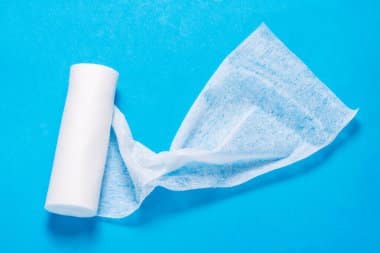As explained by Textile Learner in their article “Spunbonding Method for Nonwoven Fabric Production,” spunbonding is a streamlined manufacturing process that converts polymer materials directly into finished nonwoven products. This method involves three primary steps: web formation, web bonding, and winding into rolls.
The process begins with melted polymer fed into an extruder and forced through a spinneret. After cooling, the fibers are stretched and laid onto a moving conveyor belt to form a loose web. This web is then bonded using mechanical, thermal, or chemical techniques. The result is a durable nonwoven fabric ready for various applications.
Spunbonding is particularly efficient because it produces fabrics directly from thermoplastic polymers like polyester, nylon, polypropylene, or polyethylene. The molten polymer is extruded, cooled slightly, and deposited onto a conveyor belt to form a continuous web. The fibers bond as the web cools, creating a strong and cohesive material.
The spunbonding method is ideal for man-made filament fibers that melt under heat, such as polyester. The process involves extruding spun filaments onto a collecting belt in a uniform random manner, followed by bonding the fibers. Spunbond fabrics are known for their tensile, tear, and burst strengths, elongation-to-break, weight, thickness, porosity, and stability to heat and chemicals. These fabrics are widely used in carpet backing, geotextiles, and disposable medical and hygiene products.
A significant advantage of spunbonding is its cost-effectiveness, as it combines fabric and fiber production. The hopper feeds polymer chips into an extruder where they are melted, filtered, and extruded through a spinneret to form filaments. These filaments are quenched by cold air and strengthened through mechanical or pneumatic processes.
The company employs advanced spunbonding techniques to produce high-quality nonwoven fabrics that meet diverse industry needs. Their products are characterized by durability, versatility, and cost-efficiency, making them a trusted choice in various applications.
Click here to learn more about Acme Mills’ capabilities or products.
Article with all rights reserved, courtesy of textilelearner.net










